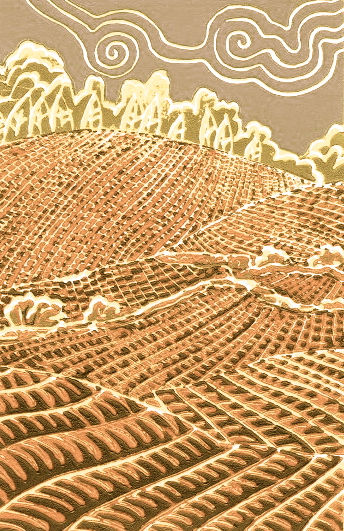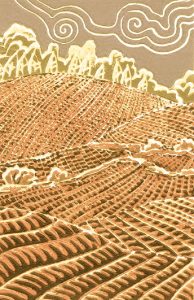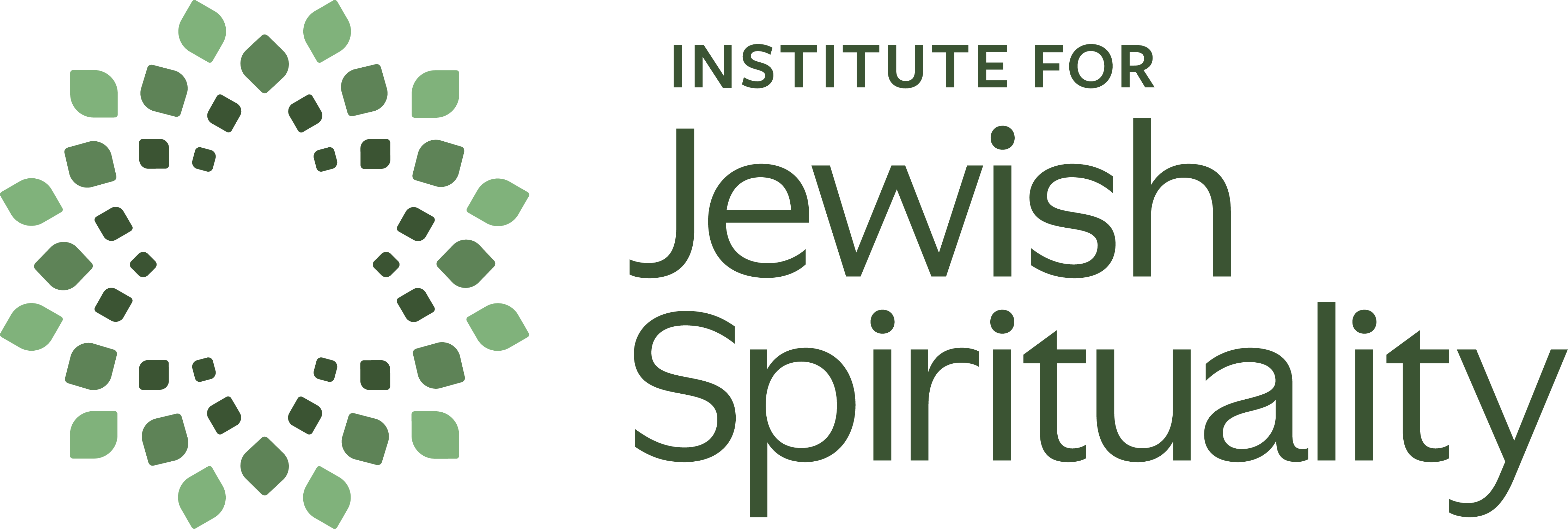
Nov 22, 2017 | by Rabbi Lisa Goldstein, Former Executive Director, Institute for Jewish Spirituality
 Although occasionally I am told that I should have been a lawyer, the truth is that I really don’t like arguing very much. As a child and young woman, arguments and disagreements frightened me. But since, like it or not, arguments are part of how this life is, I have tried to learn how to conduct them wisely, whether they happen over the Thanksgiving table or on the larger political scene.
Although occasionally I am told that I should have been a lawyer, the truth is that I really don’t like arguing very much. As a child and young woman, arguments and disagreements frightened me. But since, like it or not, arguments are part of how this life is, I have tried to learn how to conduct them wisely, whether they happen over the Thanksgiving table or on the larger political scene.
One of my great teachers in this endeavor has been Rabbi Nachman of Breslov. He teaches that a machloket, an argument, has the power both to destroy worlds and to create them. The difference is a question of emunah, of faith.
Nachman says that when an argument arises, it can create a space in which new ideas can proliferate. These new ideas lead to the Torah itself becoming more and more complete. Since according to tradition, Torah is the blueprint of creation, if there is more Torah, there are more worlds with all their details and wonders and possibilities. But if there is a lack of faith, this doesn’t happen and instead, arguments become tools of destruction, tearing people and things down.
The example from the Torah is the pivotal story in which the Israelites were in the desert and worried about not having enough water to drink. They rebelled against Moses, not believing in his ability to take care of them. God instructed Moses to speak to a rock, but instead he struck it twice. Water started flowing, which took care of the people’s thirst, but because Moses did not show faith in God, he was not allowed to enter into the Land of Israel.
So what is this faith that Moses and the people failed to show? Perhaps it is an open, spacious acceptance of not knowing right now. This is the opposite of fear. The people were clearly afraid. They couldn’t see how they were going to be taken care of. And Moses, instead of modeling calmness and helping them trust that things were going to be okay, got hooked by their fear and hostility and reacted with harshness and violence. It can happen to the best of us. But he destroyed, instead of creating. He sullied the quality of emunah. And he paid the price.
Nachman adds that if Moses had turned towards his faith, he could have brought forth new pure waters from the rock, a metaphor for all the elusive, vital teachings that could have emerged from that challenging place. Perhaps those lost teachings are exactly the ones we need today.
We live in times when arguments and conflicts are proliferating on many scales. We are standing in the balance between the potential for new, vital, creative understandings that will help us move forward together and the potential for more violence, harshness and destruction. By cultivating this kind of faith, an open spacious acceptance, this Thanksgiving, perhaps we will bring new pure waters into the world and help tip the balance towards creativity and light. Then we will have even more to be grateful for.
From the place where we are right
flowers will never grow
in the Spring.
The place where we are right
is hard and trampled
like a yard.
But doubts and loves
dig up the world
like a mole, a plough.
And a whisper will be heard in the place
where the ruined
house once stood.
The Place Where We Are Right
Yehuda Amichai

Dec 13, 2012 | by Rabbi Lisa Goldstein, Former Executive Director, Institute for Jewish Spirituality

As I walk through New York City these days, particularly in the evening, I am conscious of a desire to hold on to this magical time of year and not to let it pass. The city is filled with lights and decorations and people in beautiful clothes; the sidewalks are crowded with Christmas trees and holiday shoppers. It seems like everyone is heading out to a party and the darkness is warm and cozy, not cold and lonely. Wouldn’t it be great if it were like this all winter long until spring comes? And come to think of it, why stop just because the days are longer?
One could argue that the story of Chanukah is also about holding on. The second blessing reminds us of the miracles that were performed on our behalf at this time of year – this very same time of year. Now it’s just like it was back then! We want to remember the miracles and the deliverances, to keep the power of memory, to bring back traditions of our real or mythical ancestors – the specific latke technique, the Yiddish or Ladino melodies.
How profound, however, that the candles we use to make known the miracles are small, thin candles that go out in less than an hour! They are not like Shabbat candles that last through dinner or like yahrzeit candles that burn 24 hours. In fact, one of my family’s traditions is betting on which candle will go out last and watching intently as the flames flare and gutter and go out, releasing its twisting ribbon of smoke.
We know that everything passes – the candles, the holidays, the winter, life itself. Even the miracles come and go; the siddur reminds us that new miracles are constantly with us, morning, noon and night. The ephemeral candles remind us that light is beautiful, even when it’s fleeting – perhaps even because it is fleeting. They remind us that joy and gratitude in and of themselves are miracles of the spirit.
Wishing you and your loved ones a Chanukah filled with light and all kinds of miracles.

Jul 25, 2012 | by Rabbi Lisa Goldstein, Former Executive Director, Institute for Jewish Spirituality
The July retreat season flew quickly by. For me, the hidden jewel of the season was the silent contemplative Shabbat. It combined two things that I treasure as part of my spiritual life: Shabbat and silence.
Shabbat and silence can be surprisingly similar. To the uninitiated, Shabbat can seem like a bunch of rules, mostly involving things you can’t do. But those who regularly observe Shabbat know that the structure of the tradition allows for something magical to happen. By temporarily turning away from the demands of work, entertainment and acquisition, we can make space for experiences of true meaning.
Silence works in a similar way. By temporarily not engaging in social conversation, I make space to find deeper meaning in my own life. My habitual thoughts can rest a little. I give myself time to notice how I am really doing, not just how I want to be doing. What is going on in my heart underneath all the distractions of life? What wisdom can emerge from that knowledge? How does the Divine move through it all?
Some of that I can also do in conversation with someone I trust. But in silence, I don’t have to explain or justify anything to anyone. No one will demand an answer or offer a solution. If I am feeling sad, I can feel sad. If I am feeling alive and grateful, that’s fine. I don’t have to define it or describe it or analyze it. I can just feel it and be it – until it shifts and becomes something else. There is a comfort and a safety in the silence. I can lean into it, knowing it will support me and lead me where I need to go.
It may seem counterintuitive that being quiet with a group of other people who are also in silence is much more powerful than silence alone. And yet, that is true. (At least, that is true for me.) I often feel a strange intimacy and affection for fellow meditators, even when I don’t know any biographical information about them. The silence allows me to remember the fundamentals of being a human being: the longing for love and meaning, the pain of suffering, the inevitable passing of time. The realization that I share those things with every other person becomes a lived experience in silence, not just a beautiful thing to think about.
A silent Shabbat – most coveted of days!

Jul 11, 2012 | by Rabbi Lisa Goldstein, Former Executive Director, Institute for Jewish Spirituality

Our July retreat season is underway and what a pleasure it is to gather together in person with our far-flung community at the Trinity Conference Center in beautiful West Cornwall, Connecticut! Our first retreat, which was an open retreat, focused on cultivating gratitude, and our second retreat, which is happening now, is for our seventh cohort of rabbis. Here are a few highlights of the retreat on gratitude:
- An early morning walk by the Housatonic River with banks of orange lilies, sightings of herons and a beaver waddling between the rocks at the river edge.
- Observing how the process of asking questions about the Torah portion – and not answering them – transformed a strange fairy tale with a talking donkey and things happening in threes into profound insights about experiencing Divine guidance and skillful responses to obstacles and ambivalence.
- Watching a whole roomful of people from a wide range of Jewish backgrounds open their hearts in song.
- Exploring real obstacles to gratitude, such as being uncomfortable with receiving from others or confronting challenging situations, and how we and Jews in ages past have tried to overcome these obstacles.

- Savoring trout that was caught that same morning, along with cold mint pea soup, fresh local tomatoes with pesto, salad with raspberries and walnuts, seitan with a ginger sauce, roasted carrots and “white chocolate blackberry dream” (which is exactly what it sounds like).
- Welcoming our beloved Shabbat with radiance and joy.
- Learning that the Hebrew work for “thanking” (lehodot) can also mean “acknowledging” and practicing saying “thank you” or “Yes, this too” to whatever arises, through prayer, yoga, meditation and traditional texts.
- Using freshly picked rosemary, thyme and sage as the spices for Havdallah.
If you were at this retreat (or if you have been at other retreats at Trinity), what have been some of your highlights?

Jul 5, 2012 | by Rabbi Lisa Goldstein, Former Executive Director, Institute for Jewish Spirituality

It was cool and drizzly when I left my apartment one morning last week, wearing my spring raincoat, but by mid-afternoon, it was sunny and warm. At the end of the day, I walked out of the office, leaving my coat on the rack outside my office door. I rode the crowded subway to my stop, dropped in at the grocery story to pick up a couple of things, and as I started to cross the street to my apartment, all of a sudden, I knew.

The keys to my apartment were not in my bag. They were in the pocket of my raincoat, hanging on the coat rack outside my office door.
I know that moment so well, that mental click from forgetting to remembering. It’s a cold, jarring sensation. It’s the jolt that accompanies waking up in meditation or suddenly knowing the right word for the crossword puzzle. In American Sign Language, it’s the popping up of the index finger in the sign for “understanding.” I think it must be related to the burst of the sephirah chochmah, the flash of creative insight that wasn’t there a moment ago.
The stories that accompany remembering can vary. It can be the exasperation and self-judgment that focuses on the forgetting. (“I am such an idiot! Now I have to get back on the subway, go all the way back to the office and then retrace my steps again!”) Or it can be marveling at the mind’s ability to wake up, even when it used to be asleep. (“How amazing that I remembered before I actually reached into my bag to find my keys!”) It can even be compassion. (“Our poor brains! Think of all the things that bombard us day in and day out! No wonder we forget so much. How else would we survive?”)
For me, the small, inconvenient act of forgetting and remembering spurred me to consider: what else have I forgotten? Have I remembered to be grateful for owning a key and a raincoat, for having the physical strength to get back on the subway, for having an office and a job, for walking through the early evening light in New York City with the thousands of other people, each with their own hopes and disappointments and stories?
So much of spiritual practice is about remembering to remember.

 Although occasionally I am told that I should have been a lawyer, the truth is that I really don’t like arguing very much. As a child and young woman, arguments and disagreements frightened me. But since, like it or not, arguments are part of how this life is, I have tried to learn how to conduct them wisely, whether they happen over the Thanksgiving table or on the larger political scene.
Although occasionally I am told that I should have been a lawyer, the truth is that I really don’t like arguing very much. As a child and young woman, arguments and disagreements frightened me. But since, like it or not, arguments are part of how this life is, I have tried to learn how to conduct them wisely, whether they happen over the Thanksgiving table or on the larger political scene.









